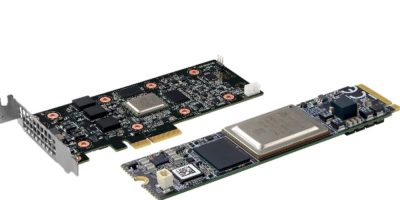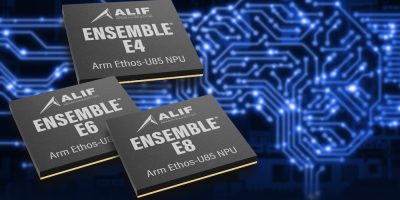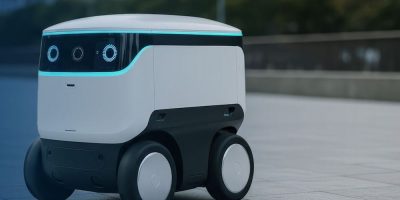Rutronik has recently added Axelera AI, a European pioneer in AI and edge computing, to its franchise partners. Axelera Metis products offer an alternative to traditional GPU-based solutions. The Metis AI platform is a holistic AI solution that combines state-of-the-art hardware and software. The hardware portfolio includes the Metis M.2 AI Inference Acceleration Card and the Metis PCIe AI Inference Acceleration Card.
At the heart of the Metis AI platform is the Metis AIPU (AI Processing Unit), a quad-core chip based on a proprietary RISC-V architecture and Digital In-Memory Computing (D-IMC). This architecture enables AI inference performance of up to 214 TOPS with energy efficiency of 15 TOPS/W. This makes it ideal for computer vision inference on the edge and provides scalable technology to meet the future demands of AI acceleration workloads.
The hardware is complemented by the Voyager SDK, a software package that simplifies model deployment, optimisation and integration.
Metis M.2 AI Inference Acceleration Card
This card, powered by the Metis AIPU, is ideal for applications with limited space that require powerful AI inference. In addition, the M.2 card has 1 GB of dedicated DRAM memory, which helps reduce power consumption and enables easier integration into systems. Its inference performance is up to 214 TOPS with 5 to 9 W typical application performance. A PCIe Gen3 x4 interface and security features (Secure Boot, Root of Trust) round out the product. The Metis M.2 AI Inference Acceleration Card is optionally available with an active cooling solution.
Target applications:
• Surveillance: easy deployment in buildings, construction sites or event venues
• Robotics: high-resolution advanced gesture recognition, pose estimation and decoding of human
intentions
• Medical: improved accuracy of real-time diagnosis, monitoring, imaging and analysis
• Agritech: crop analysis, smart irrigation, pest control, automated harvesting
• Drones: navigation, object detection and monitoring in lightweight, battery-powered UAV systems
Metis PCIe AI Inference Acceleration Card
The PCIe single slot cards in HHHL form factor with PCIe Gen3 x4 interface are also powered by the Metis AIPU. The PCIe version features up to 3,200 FPS for ResNet- 50, up to 214 TOPS with typical application performance of 8 W to 15 W, and active air cooling. Security features such as Secure Boot and Root of Trust are also integrated. It is available with 4 GB and 16 GB memory configurations.
Additional options with four Metis chips will be available soon, enabling up to 856 TOPS. These will then be available with 16 GB and 64 GB memory.
Target applications:
• Security: faster detection of incidents such as break-ins, falls or abandoned luggage
• Industry 4.0: fault detection, quality control, occupational safety
• Retail: customer behaviour, inventory monitoring, automated checkout systems
• Mobility: toll collection, enforcement and parking management
• Logistics: improving operational efficiency and safety in logistics centres
Both products support simultaneous inference on multiple cameras and enable the parallel use of independent neural networks. They offer a wide range of end-to-end AI pipelines and pre-trained models for a wide variety of applications. Advanced quantisation tools also ensure high prediction accuracy without compromising performance.







